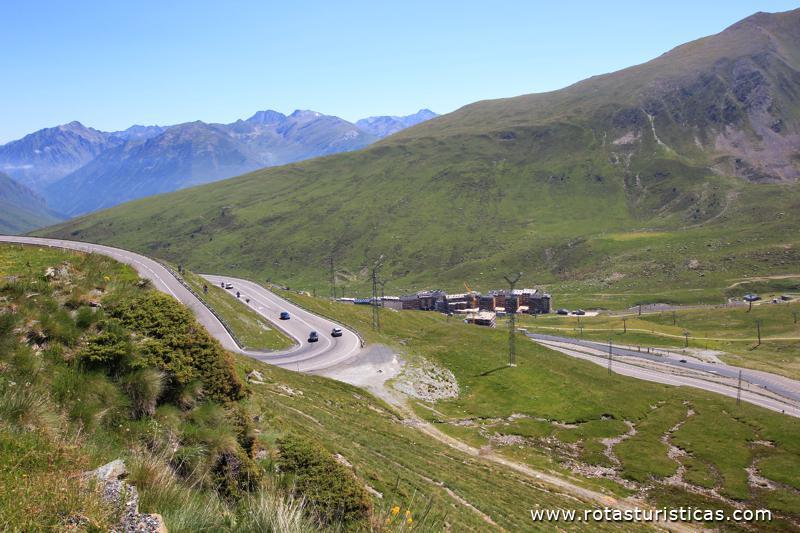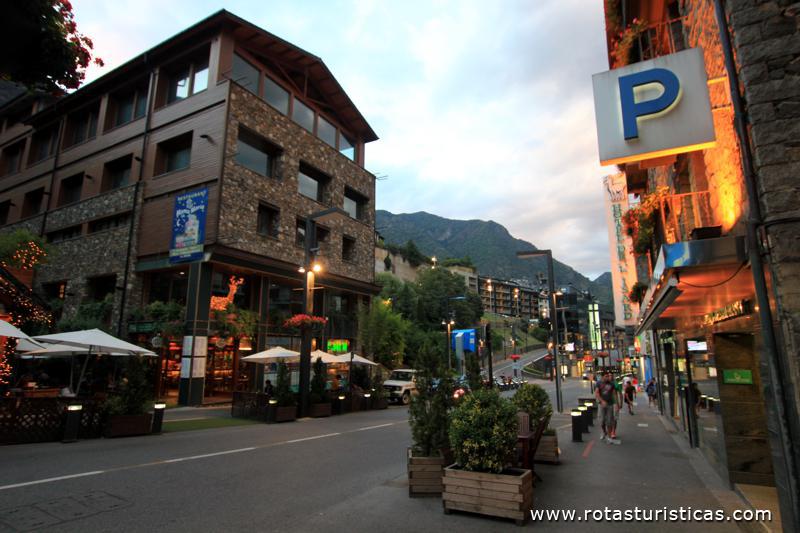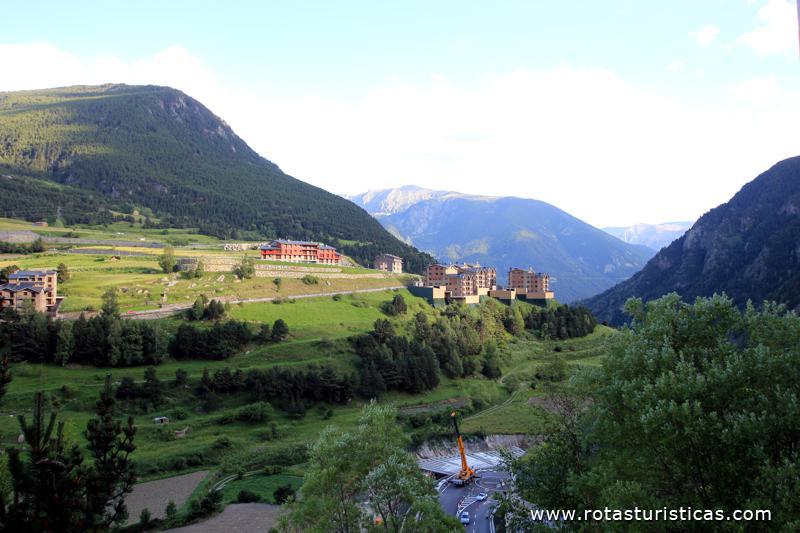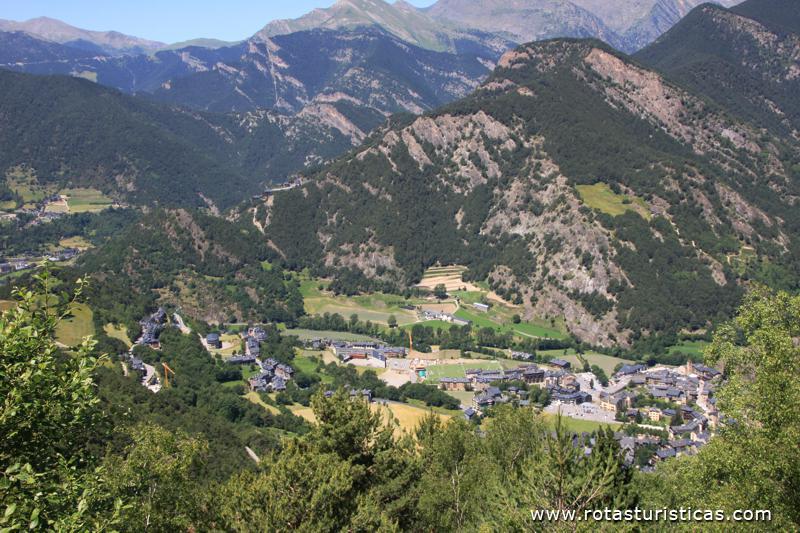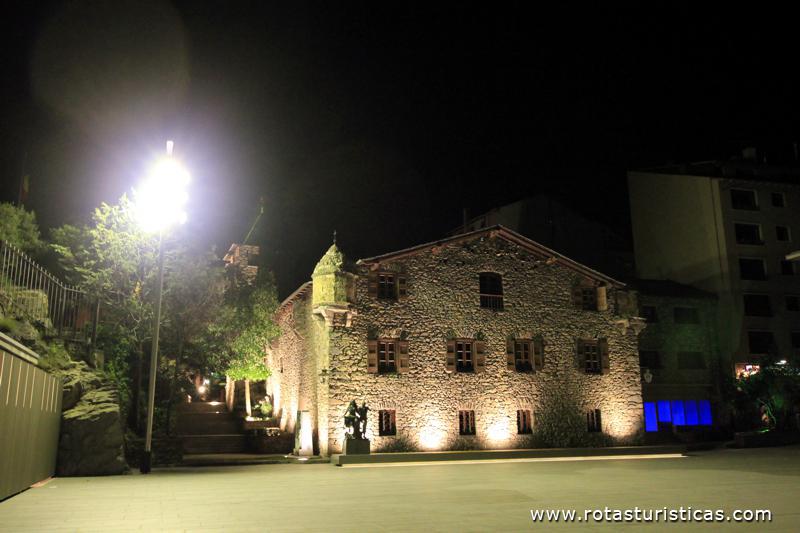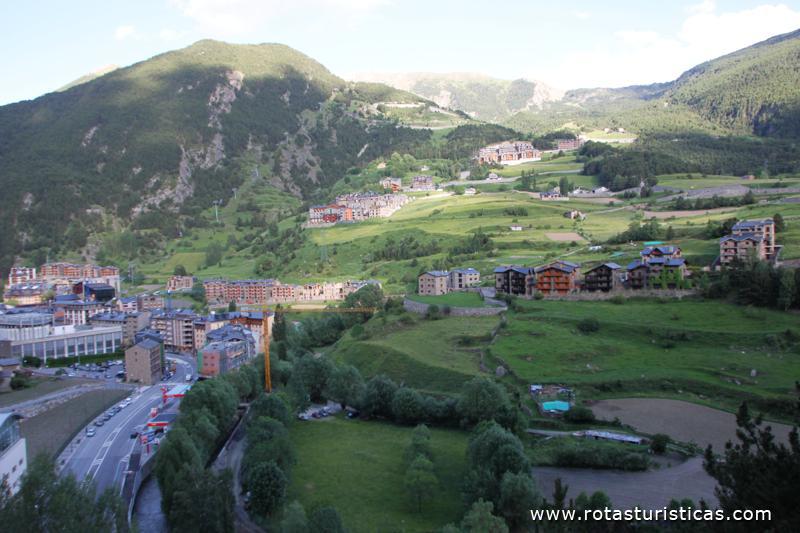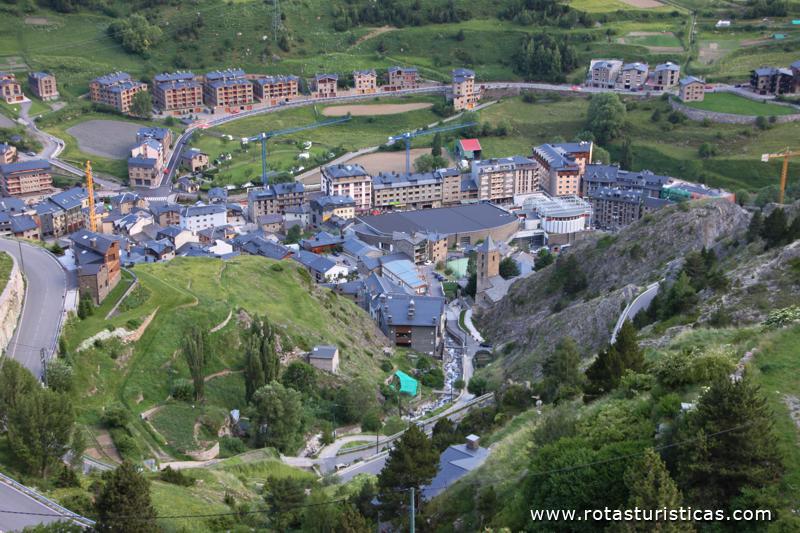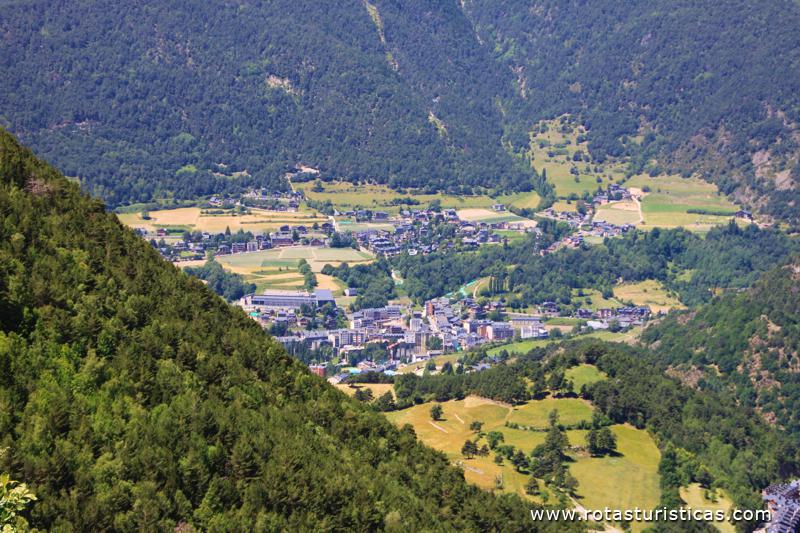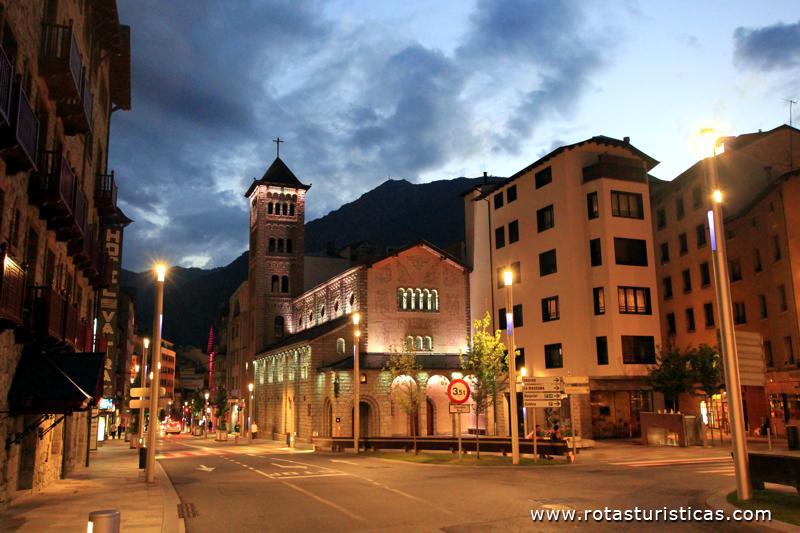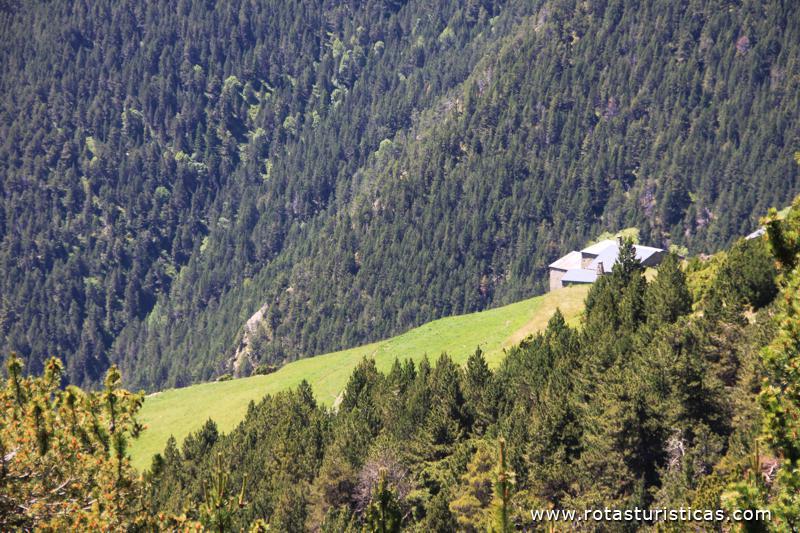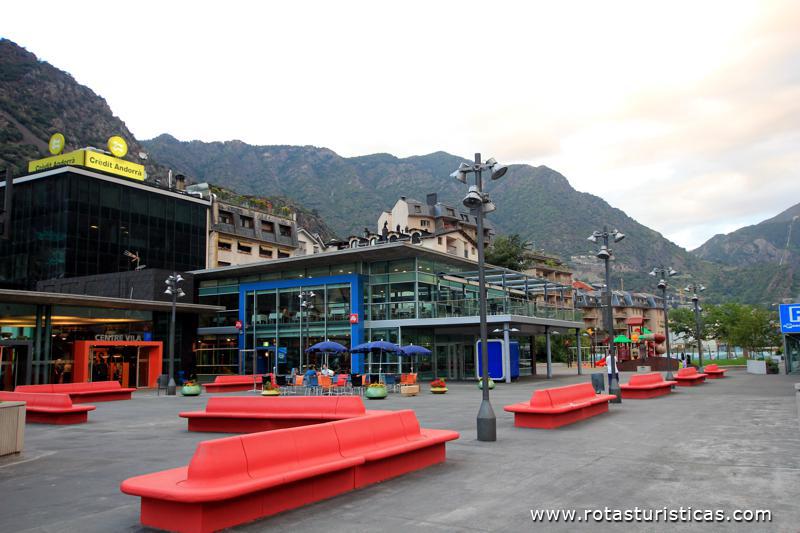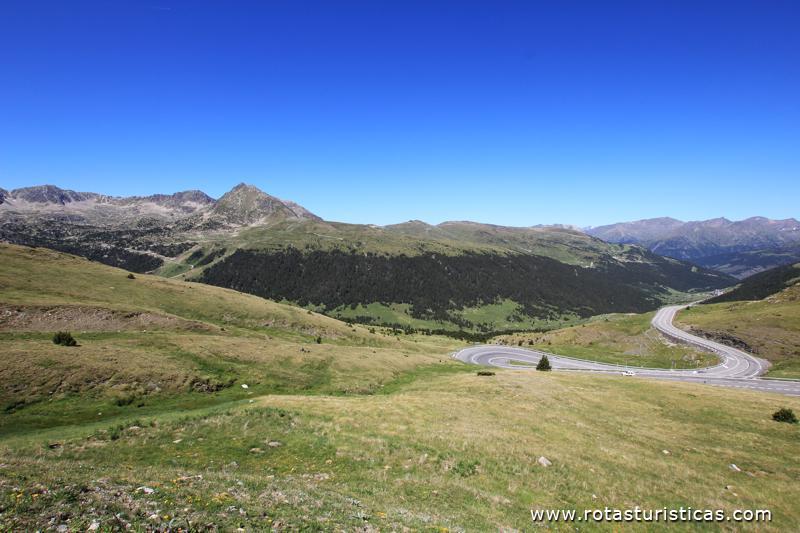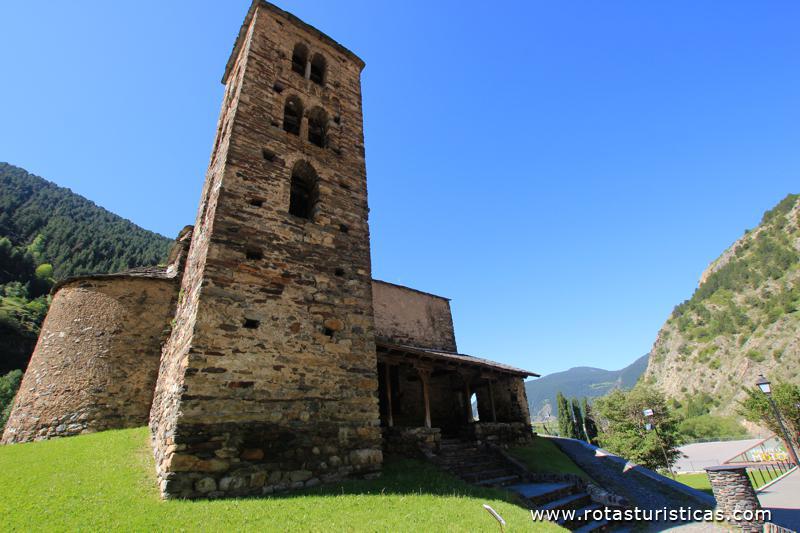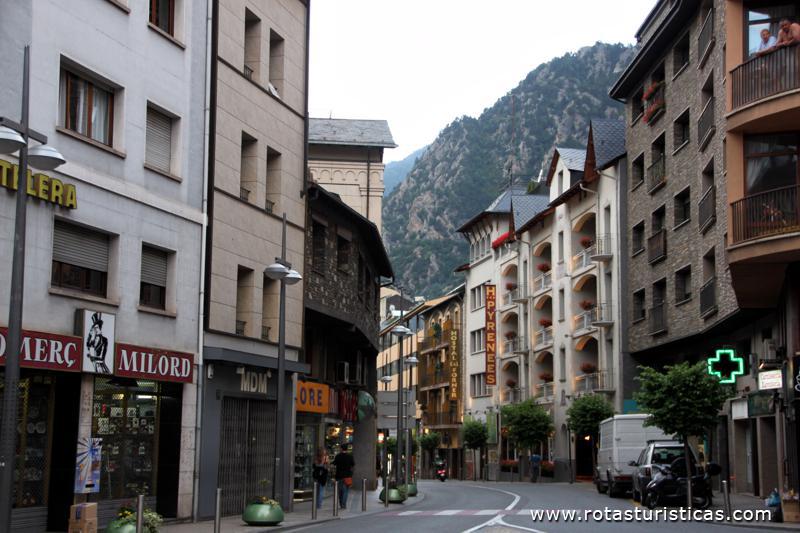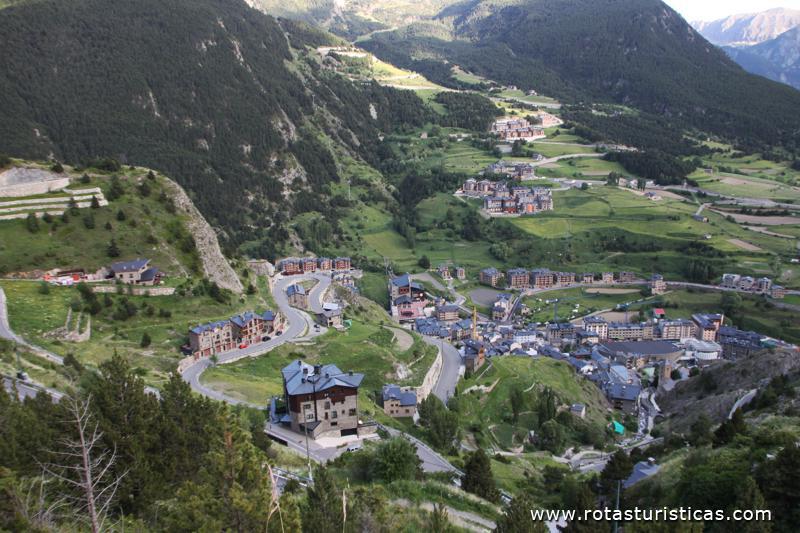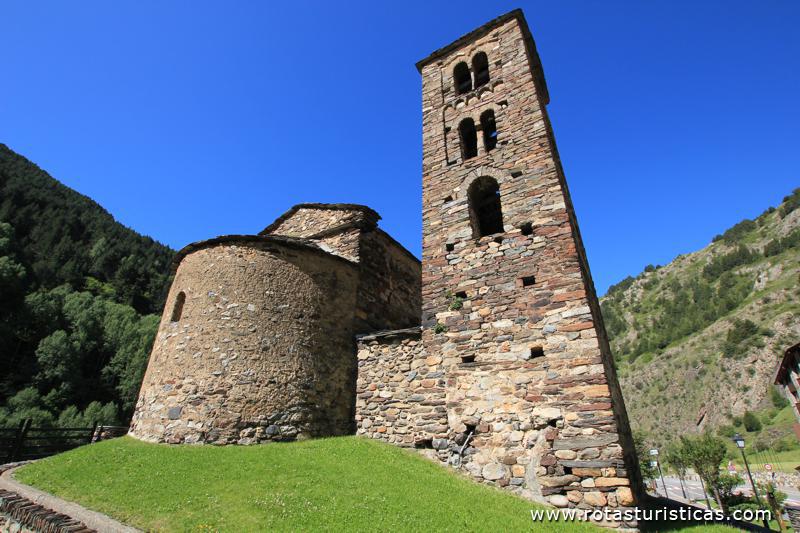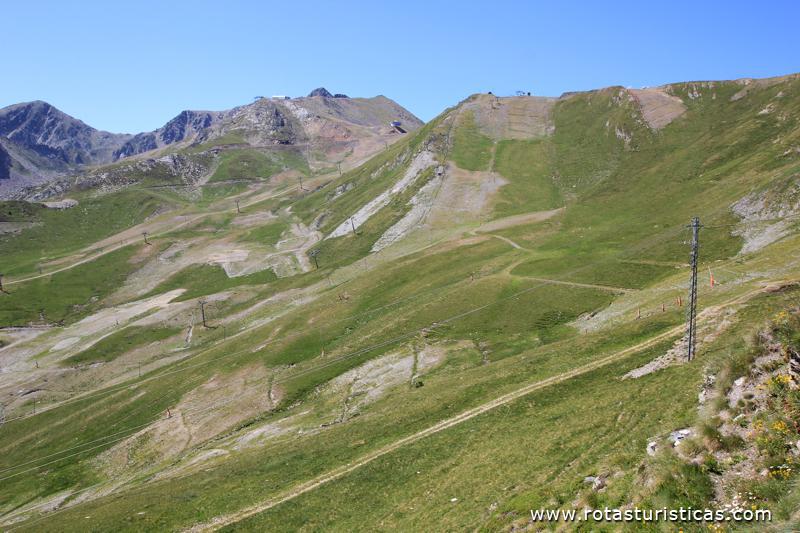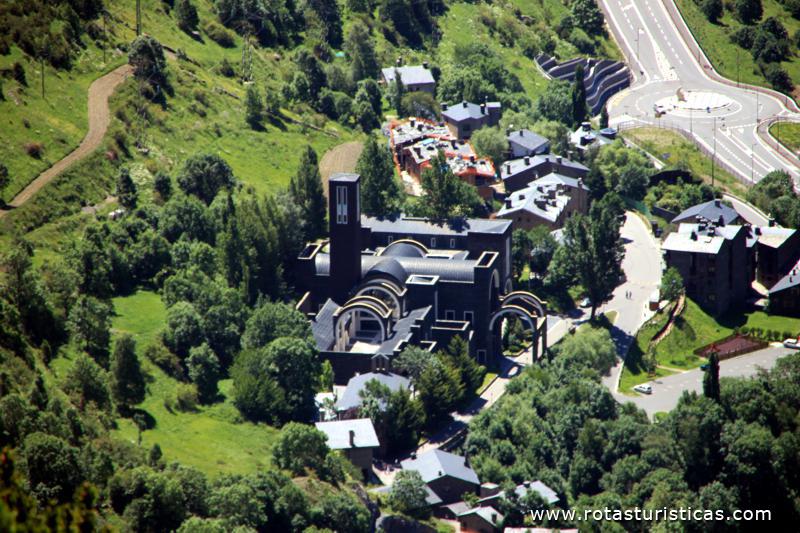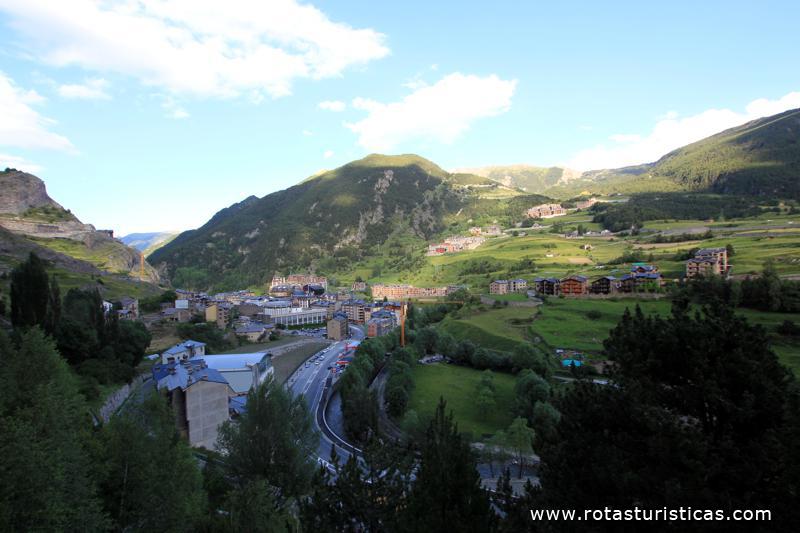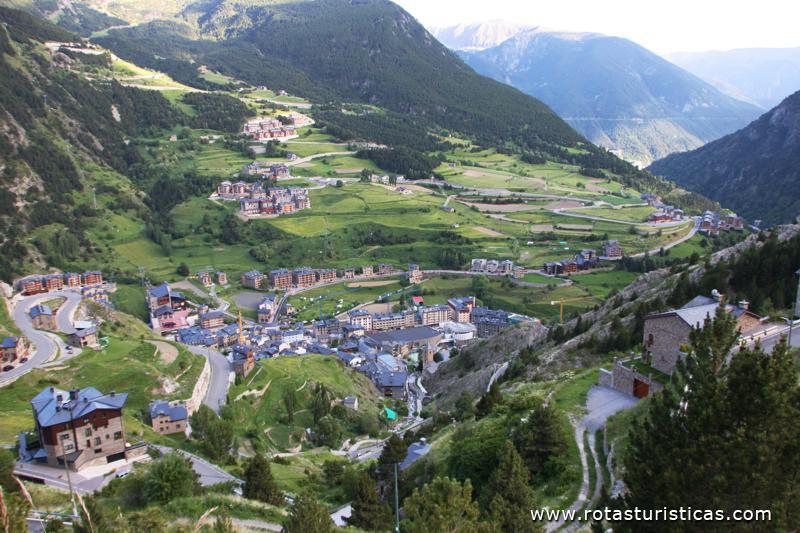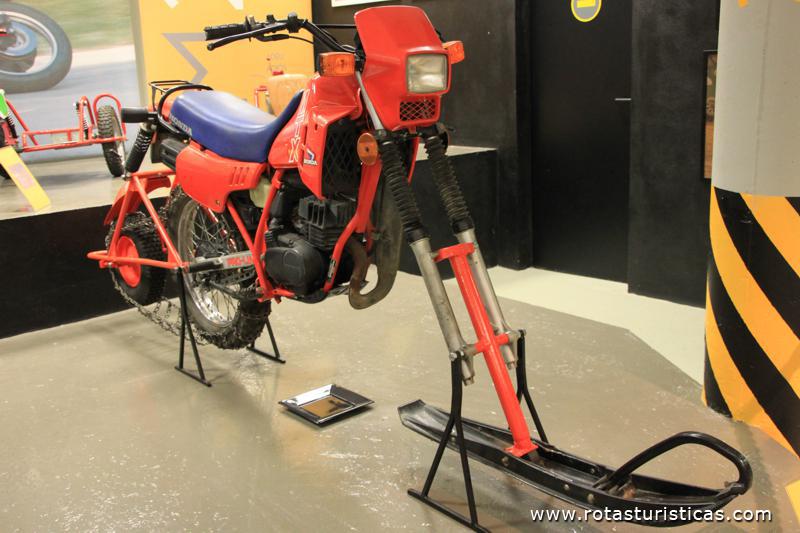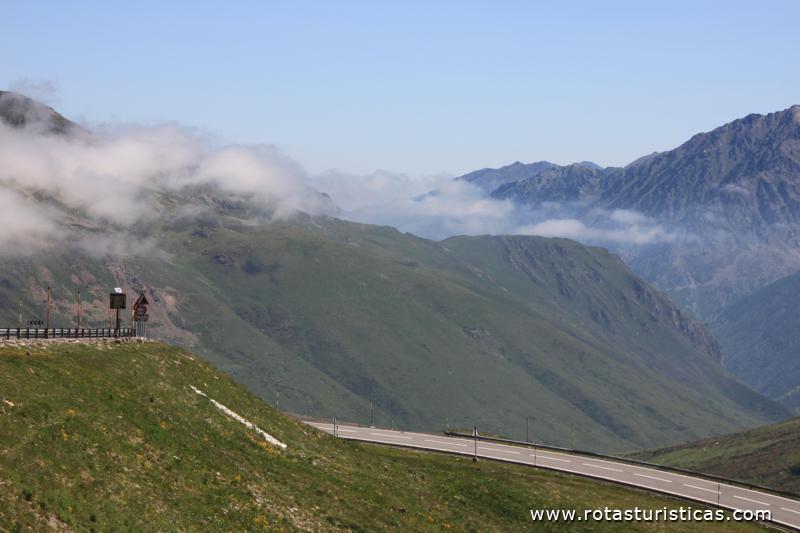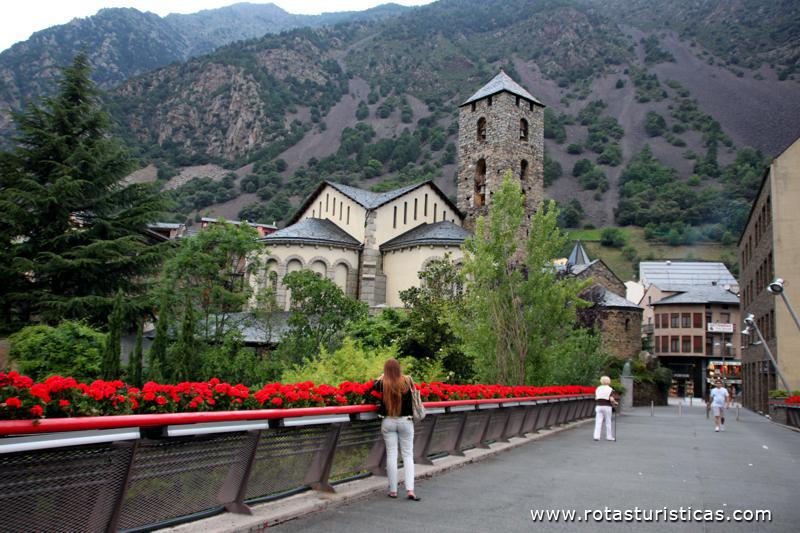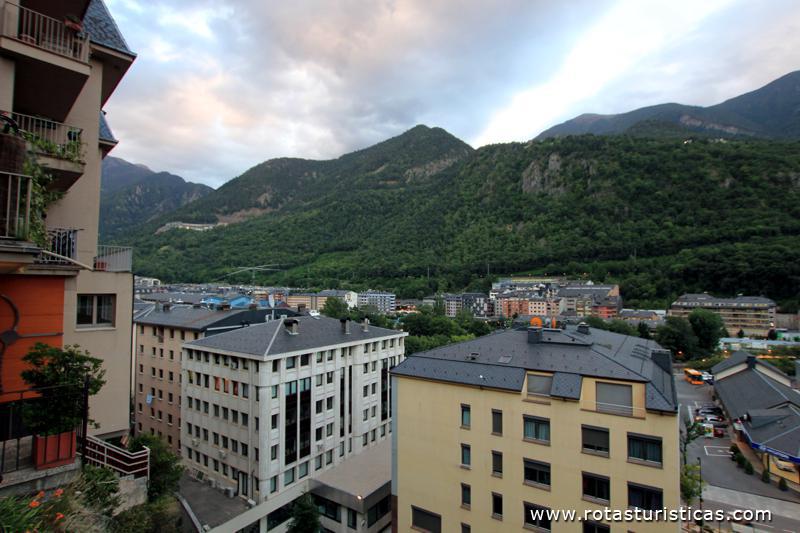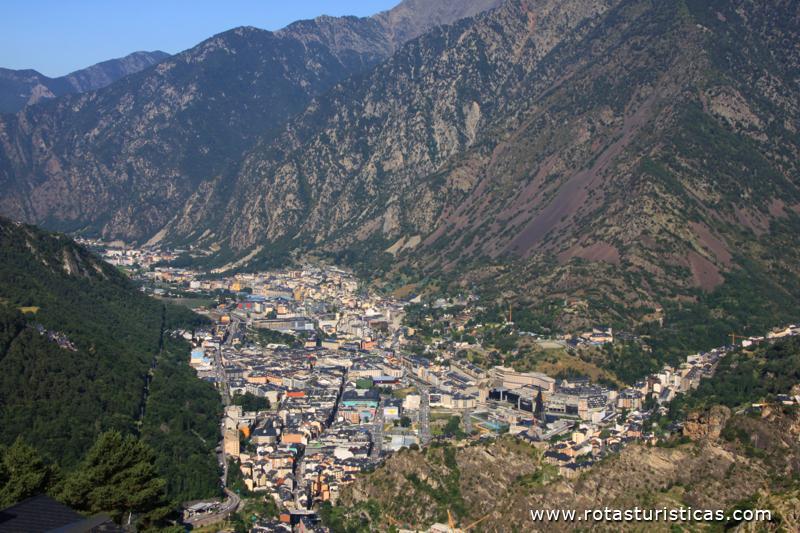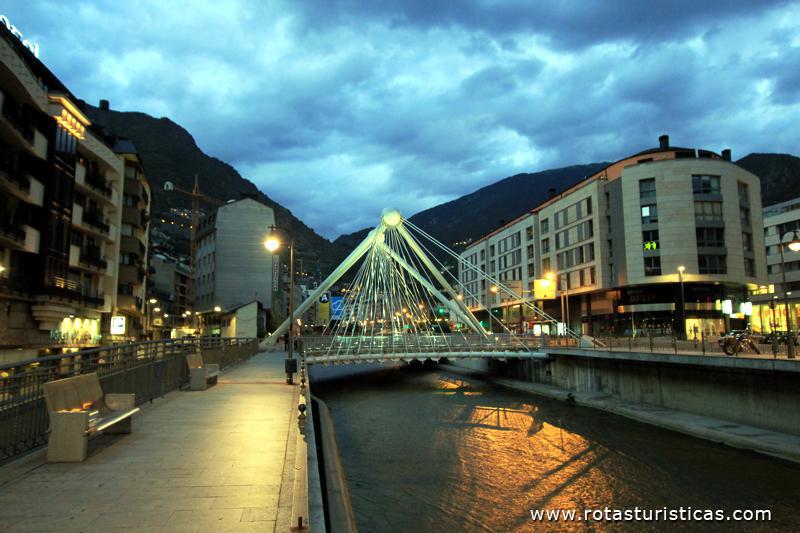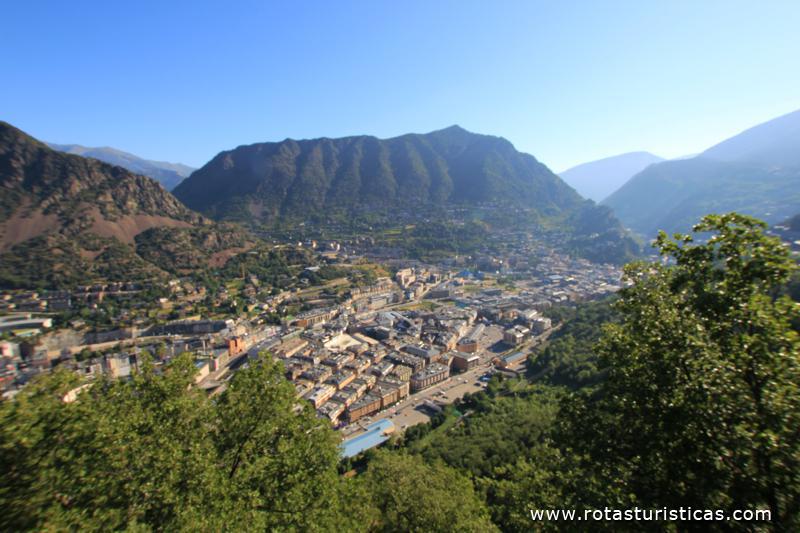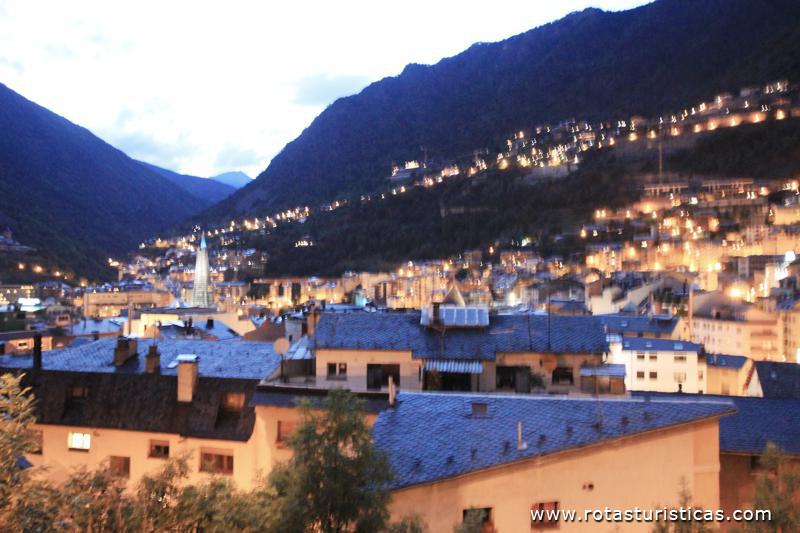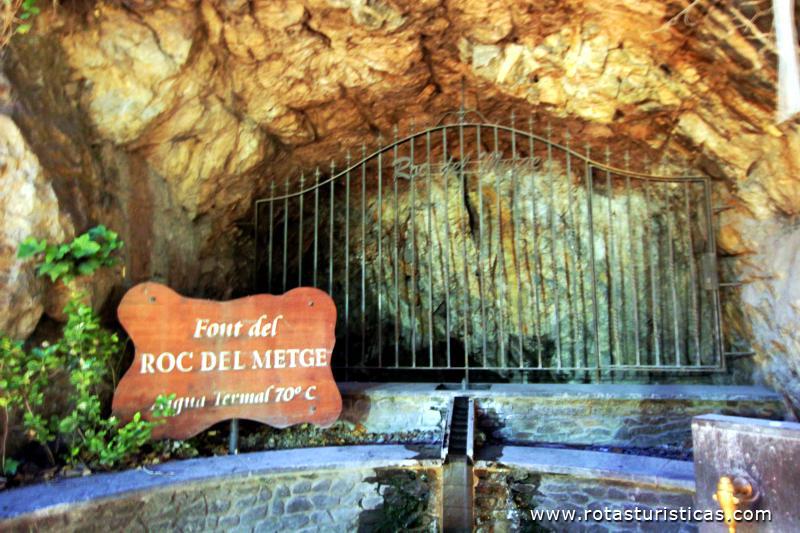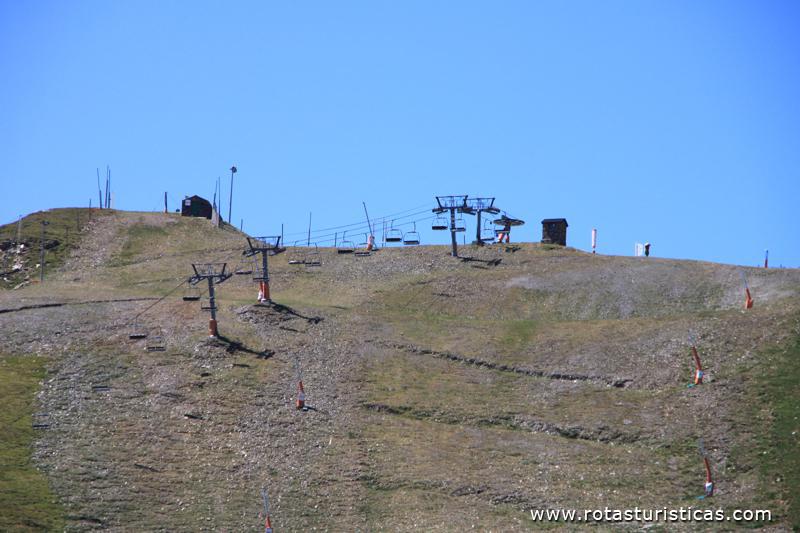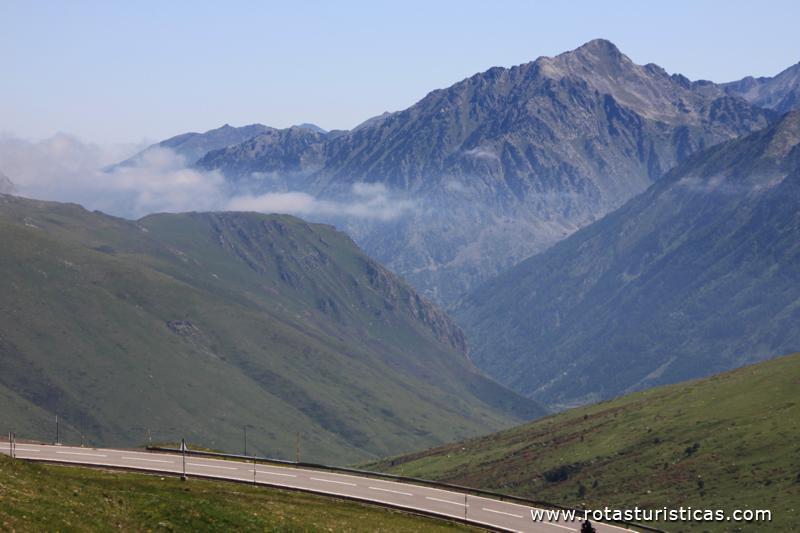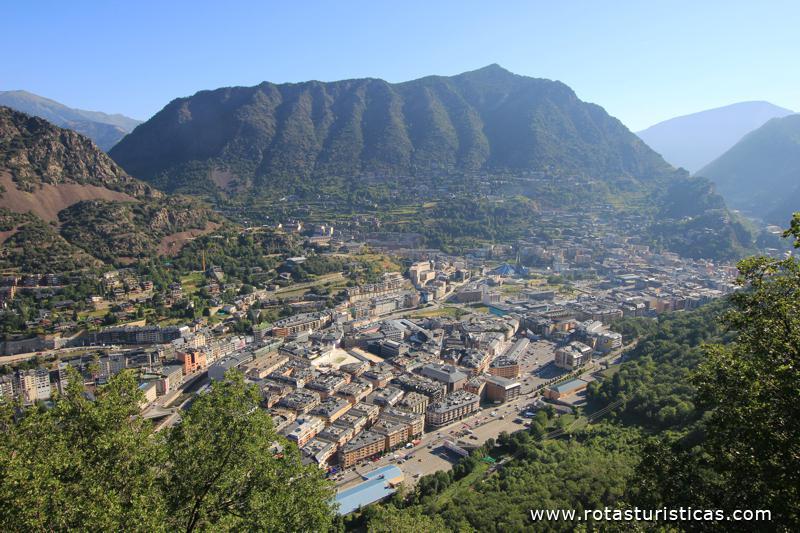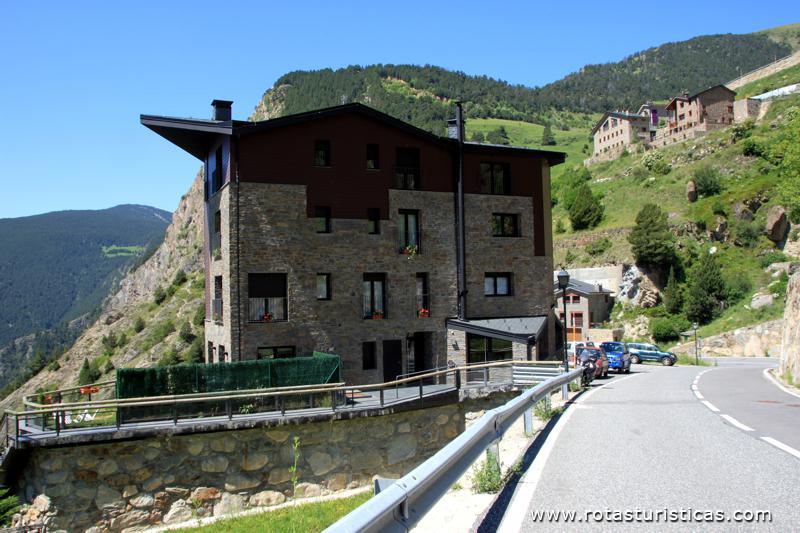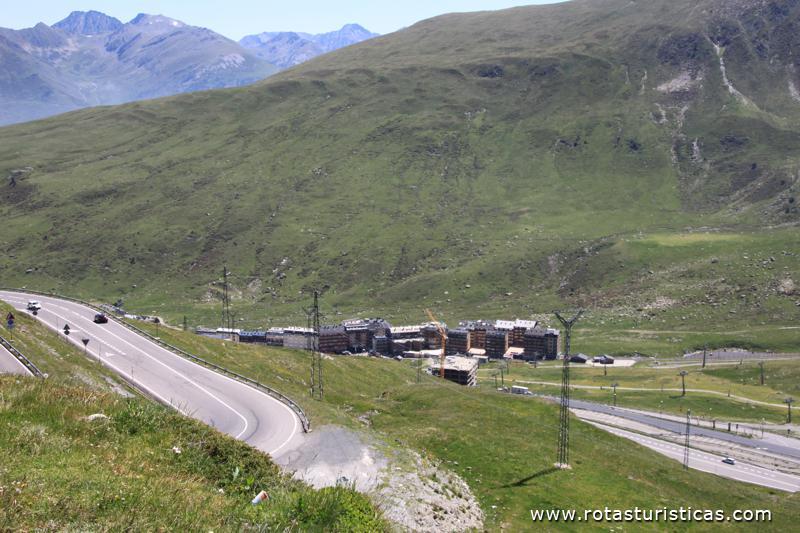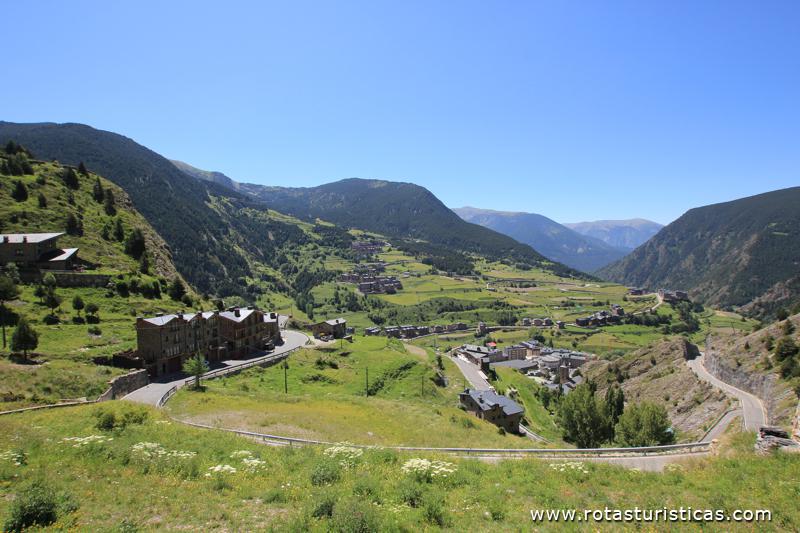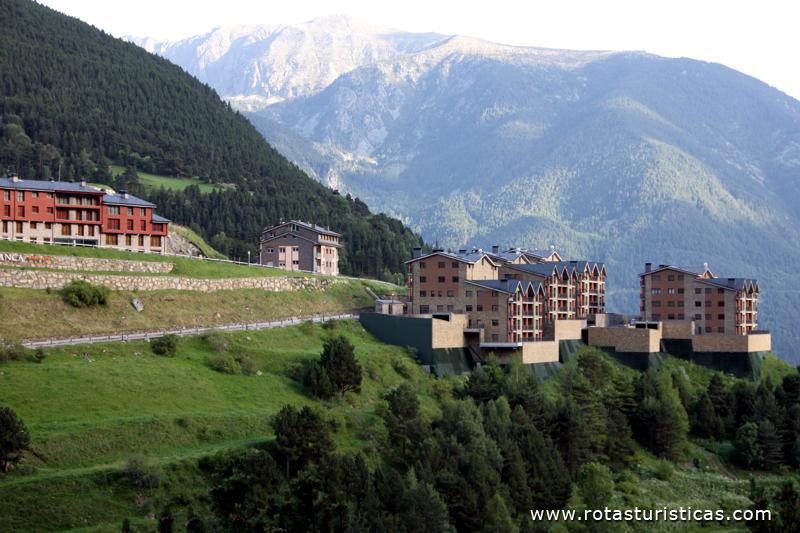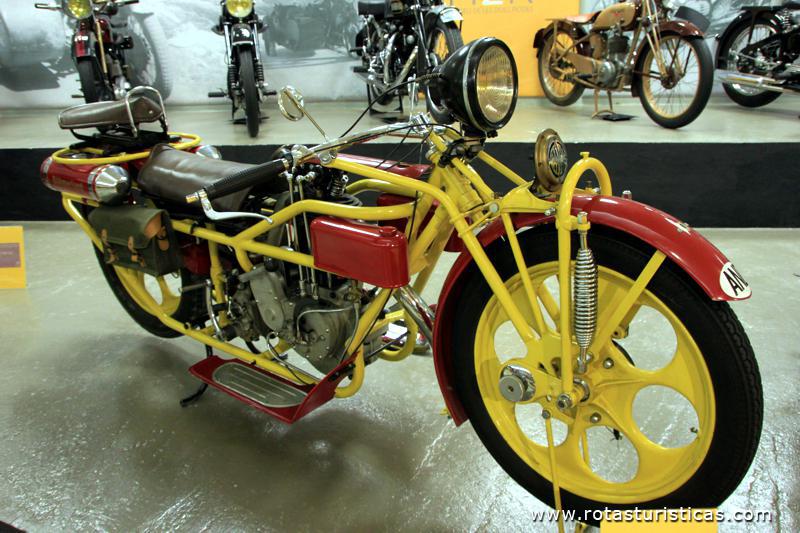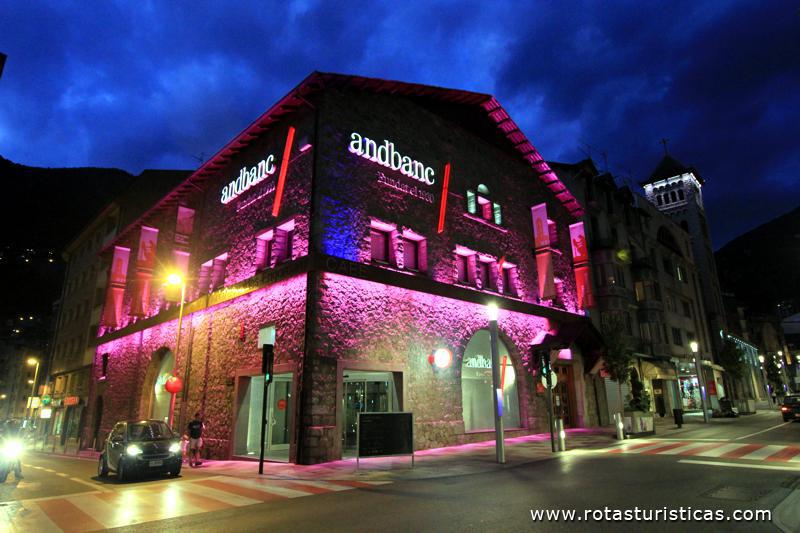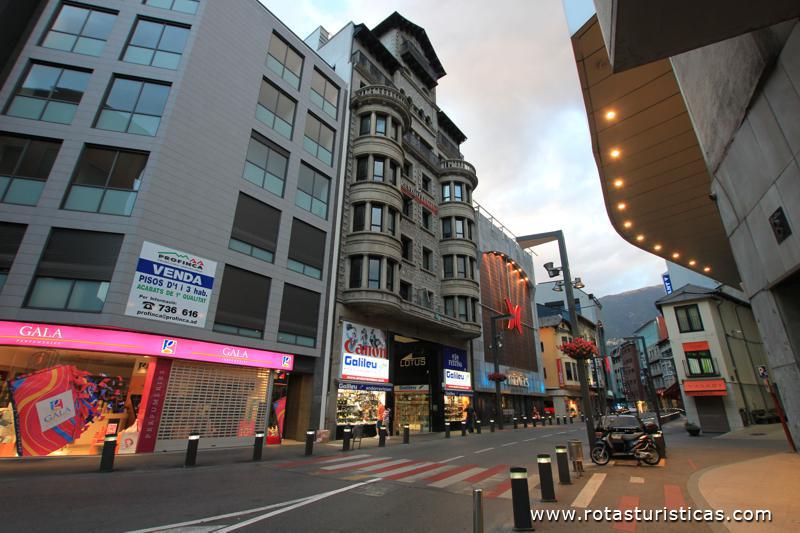Pictures of: Andorra
Location map
Airports
Hotels and other Accommodation
Golf Courses
What to visit
Where to Eat
Consulates & Embassies
World Nomads
The Travel Insurance with the largest coverage

The Travel Insurance with the largest coverage

Andorra
The Principality of Andorra is one of the smallest countries in the world (468 km²). Situated in the Pyrenees, southwest of Europe, between France and Spain. Tradition reports that Charlemagne liberated Andorra from Arab rule in the 9th century. From 1278 to 1993, the Andorrans lived under a unique co-main regime, under the control of France and Spain. In 1993 Andorra became a parliamentary democracy.
The Principality of Andorra is situated in the interior of the Pyrenees Orientales; is limited to the north by France and to the south by Spain. Its relief consists of gorges and narrow valleys, surrounded by mountains. The principality has about 64 thousand inhabitants, of Andorran origin, Spanish, Portuguese, French and other nationalities. The capital is Andorra-a-Velha and the official language of the country is Catalan, with French and Spanish being other languages spoken. The surface of the country is 468 km2.
According to the 1993 Constitution, Andorra is an independent, democratic, parliamentary co-principality, with total sovereignty in the hands of the people. Spain and France
their co-princes (the bishop of Urgel in Spain and the President of France, respectively) remain as heads of state, with reduced powers and constitutionally defined. There is a single-chamber assembly composed of 28 members, the
General of Valleys, for which 14 members are elected, based on a national list, and 14 others based on seven binominal circles (parishes). There is also a
Executive headed by a president, who holds the position of prime minister based on the support of the Assembly.
Story
Andorra was for some centuries an agricultural and artisanal territory, where hunting was frequent. In 1278, the bishop of Urgel became co-suserano of the count of Urgel, that maintained the possession of the principality until century XVI. Andorra remained a condominium of the bishop of Urgel, except during the period of the French Revolution, when the revolutionaries declared independence of the principality. In 1806, the locals asked Napoleon to return the status of principality to the territory. For 700 years, the principality was vassal on both sides: Bishop of Urgel and the French President. Until 1970, the right to vote was exclusive to Andorra's men from the third generation. At present, the vote is extended to all first-generation Andorrans, aged 28 or over, whose parents are foreigners. The number of voters is small compared to the total population, about 70% of which is made up of foreign residents who have been claiming their political and citizenship rights. Immigration, controlled through a quota system, is restricted to nationals of France and Spain who wish to work in Andorra. Prior to 1993, the country had no formal constitution, and all motions and proposals to be submitted to the permanent delegates (representatives of the two heads of state) for approval.
In 1976 a political organization, technically illegal, was created, the Andorra Democratic Party, which provided the basis for a future democratic system. Oscar Riba Reig became the country's first prime minister in 1981, and in 1982 was appointed an Executive Council headed by the Prime Minister. This has led to the separation of legislative and executive powers. In July 1991, formal ties were established with the European Community.
In May 1993 a new constitution was adopted, granting independence to the country in all respects but that of external security, which remained under the responsibility of France and Spain. The first direct elections took place in December 1993. A coalition government led by Prime Minister Oscar Riba Reig was formed. In 1994 Andorra became a full member of the United Nations and the Council of Europe. The Reig coalition, the National Democratic Group, lost the support of the independents in December 1994, and Marc Forne of the Liberal Union replaced him. Since the 1950s, Andorra has become economically a prosperous nation, having come to be declared the country with the highest economic growth in the world, with a per capita income
capita superior to Japanese. In the principality there are more than 5 thousand stores and 500 hotels, the tourist activity is intense and the banking is in a stable and prosperous situation. To a large extent, this panorama is due to the tax exemption of many products and activities in the principality.
The Principality of Andorra is situated in the interior of the Pyrenees Orientales; is limited to the north by France and to the south by Spain. Its relief consists of gorges and narrow valleys, surrounded by mountains. The principality has about 64 thousand inhabitants, of Andorran origin, Spanish, Portuguese, French and other nationalities. The capital is Andorra-a-Velha and the official language of the country is Catalan, with French and Spanish being other languages spoken. The surface of the country is 468 km2.
According to the 1993 Constitution, Andorra is an independent, democratic, parliamentary co-principality, with total sovereignty in the hands of the people. Spain and France
their co-princes (the bishop of Urgel in Spain and the President of France, respectively) remain as heads of state, with reduced powers and constitutionally defined. There is a single-chamber assembly composed of 28 members, the
General of Valleys, for which 14 members are elected, based on a national list, and 14 others based on seven binominal circles (parishes). There is also a
Executive headed by a president, who holds the position of prime minister based on the support of the Assembly.
Story
Andorra was for some centuries an agricultural and artisanal territory, where hunting was frequent. In 1278, the bishop of Urgel became co-suserano of the count of Urgel, that maintained the possession of the principality until century XVI. Andorra remained a condominium of the bishop of Urgel, except during the period of the French Revolution, when the revolutionaries declared independence of the principality. In 1806, the locals asked Napoleon to return the status of principality to the territory. For 700 years, the principality was vassal on both sides: Bishop of Urgel and the French President. Until 1970, the right to vote was exclusive to Andorra's men from the third generation. At present, the vote is extended to all first-generation Andorrans, aged 28 or over, whose parents are foreigners. The number of voters is small compared to the total population, about 70% of which is made up of foreign residents who have been claiming their political and citizenship rights. Immigration, controlled through a quota system, is restricted to nationals of France and Spain who wish to work in Andorra. Prior to 1993, the country had no formal constitution, and all motions and proposals to be submitted to the permanent delegates (representatives of the two heads of state) for approval.
In 1976 a political organization, technically illegal, was created, the Andorra Democratic Party, which provided the basis for a future democratic system. Oscar Riba Reig became the country's first prime minister in 1981, and in 1982 was appointed an Executive Council headed by the Prime Minister. This has led to the separation of legislative and executive powers. In July 1991, formal ties were established with the European Community.
In May 1993 a new constitution was adopted, granting independence to the country in all respects but that of external security, which remained under the responsibility of France and Spain. The first direct elections took place in December 1993. A coalition government led by Prime Minister Oscar Riba Reig was formed. In 1994 Andorra became a full member of the United Nations and the Council of Europe. The Reig coalition, the National Democratic Group, lost the support of the independents in December 1994, and Marc Forne of the Liberal Union replaced him. Since the 1950s, Andorra has become economically a prosperous nation, having come to be declared the country with the highest economic growth in the world, with a per capita income
capita superior to Japanese. In the principality there are more than 5 thousand stores and 500 hotels, the tourist activity is intense and the banking is in a stable and prosperous situation. To a large extent, this panorama is due to the tax exemption of many products and activities in the principality.
Official language
The Constitution of Andorra defines Catalan with the official language of the state. Other languages spoken in the territory come from immigration, in order, are: Castilian, Portuguese and French.
The other languages of lesser use are Galician, English, Arabic and Hindu. By nationality, 64% of the population with Andorran nationality and 36% of residents with Spanish nationality speak Catalan. Even so, the most common language is Catalan.
The other languages of lesser use are Galician, English, Arabic and Hindu. By nationality, 64% of the population with Andorran nationality and 36% of residents with Spanish nationality speak Catalan. Even so, the most common language is Catalan.
Currency
The official currency is the Euro
Main tourist attractions
In Andorra's paradise, there are seven tiny communities called parishes. Each of them, despite its scarce surface, guarantee a space of great interest for the visitor, full of natural charms.
Andorra la Vella
Massana
Spikes
Pal
Massana
Erts
Sispony
Anyós
Ordino.
The Mecca
Sornas
São Martí da Cortinada
The Curtain
Arans
LLORTS
Llorts
Serrat
Canillo
Ranso
Encamp
La Mosquera
Les bons
Els Cortals
PAS OF THE HOUSE
Escaldes
Sant Julià de Lòria
Nagol
Aixovall
Andorra la Vella
Massana
Spikes
Pal
Massana
Erts
Sispony
Anyós
Ordino.
The Mecca
Sornas
São Martí da Cortinada
The Curtain
Arans
LLORTS
Llorts
Serrat
Canillo
Ranso
Encamp
La Mosquera
Les bons
Els Cortals
PAS OF THE HOUSE
Escaldes
Sant Julià de Lòria
Nagol
Aixovall
Travel documents
The borders of the territory of Andorra are Pas de La Casa on the French side, and the Farga de Moles on the Spanish side. European citizens of EEC member states only need the National Identity Document to enter the principality; for its part, the rest of the citizens of the world need a passport but without visa requirements.
Weather
The principality climate is mountainous, dry and cold. Despite the huge amount of snow, the humidity is not too much.
The abundance of water in the rivers and lakes when the thaw arrives make summer a hot but not agonizing season enjoyed as much as winter.
The winds are moderate, accentuating some mountain areas in the cold winter season.
The climate is temperate in Andorra. All seasons are enjoyable. For winter sports lovers, enjoy the winter. For the walks, prefer the other times of the year, especially the summer.
MAXIMUM AND MINIMUM TEMPERATURES
Andorra la Vella:
In January, from 0 ° C to 6 ° C
In March, from 2 ° C to 12 ° C
In May, from 4 ° C to 23 ° C
In July, from 12 ° C to 26 ° C
In September, from 12 ° C to 24 ° C
In December, from 0 ° C to 6 ° C
The abundance of water in the rivers and lakes when the thaw arrives make summer a hot but not agonizing season enjoyed as much as winter.
The winds are moderate, accentuating some mountain areas in the cold winter season.
The climate is temperate in Andorra. All seasons are enjoyable. For winter sports lovers, enjoy the winter. For the walks, prefer the other times of the year, especially the summer.
MAXIMUM AND MINIMUM TEMPERATURES
Andorra la Vella:
In January, from 0 ° C to 6 ° C
In March, from 2 ° C to 12 ° C
In May, from 4 ° C to 23 ° C
In July, from 12 ° C to 26 ° C
In September, from 12 ° C to 24 ° C
In December, from 0 ° C to 6 ° C
Health and vaccination
No vaccine is required to enter Andorra.
RISKS AND SANITARY ADVICE
Never go alone in the mountains, take a small first aid kit with disinfectants and poisons.
MEDICAL ASSISTANCE AND HOSPITALS
Meritxell Hospital of Andorra la Vella, Tel: (376) 87 10 00
Fire and ambulance services, Tel: 118
Police, Tel: 110
Mountain rescue service, Tel: 112
Emergency Medical, Tel: 116
RISKS AND SANITARY ADVICE
Never go alone in the mountains, take a small first aid kit with disinfectants and poisons.
MEDICAL ASSISTANCE AND HOSPITALS
Meritxell Hospital of Andorra la Vella, Tel: (376) 87 10 00
Fire and ambulance services, Tel: 118
Police, Tel: 110
Mountain rescue service, Tel: 112
Emergency Medical, Tel: 116
Gastronomy
In this mountain territory, we find two superb gastronomy: the Spanish heritage, especially Catalan, with strong, salty flavors and textures, while the French, especially Provencal, is the source of some of the wonders of Andorran food.
It is a combination that in itself ensures a good table.
With the increase in tourism, the country has been concerned to remarkably improve its facilities and gastronomic offerings, modernizing its cuisine and restaurants. However, be careful not to lose your natural charm and to preserve the "edges" or mountain houses. At the same time, they incorporated the best and most varied elements of international cuisine.
In this way, the offer of places where to eat is extensive. This small paradise gives us a good table with classic and cheap menus for those who do not want to complicate life, as well as original and fine dishes, à la carte, accompanied by a good wine and bread, for those who like to taste and innovate to their own diet.
Lentils and rice, cooked in a variety of ways and usually combined with meat or seafood, are another option that is worth a try. For their part, the "a lalauna" snails constitute a delicious and refined delicacy that contrasts with its own simplicity. Some broths similar to Spanish stews enjoy a good reputation and are also a good beginning, but there is also the possibility of finding Catalan salads and pasta cooked in Catalan, or even a delicious paella with a Pyrenean accent.
The Andorran cheeses, are as good as others, the jamóm serrano, of very good quality and a good bread, that there are of many types, can be another way to start the food, if you want something stronger.
Roasted veal chops are usual and safe because their flavor does not change with many seasonings. On the other hand, the goat in the oven is another typical dish that should be tried, as well as the pork, prepared in the oven, where it acquires a delicious flavor. The couscous, cassulet and civet of wild boar and wild boar are very Andorran dishes that stand out for their flavor.
Vinaigrette partridge is the favorite among the dishes based on birds. It has a slightly acid taste that blends very well with the softness of the meat. You can not leave Andorra without having tasted this dish.
As for desserts, the variety is equally immense. The mousse is abundant, with several flavors and sweet crepes. As counterpart, of Iberian heritage, we advise you to taste the french toast, bread bathed in honey and cream. The pastry is equally wonderful, putting commitment in the combination of sweet and acidic flavors. They are peculiar to the lemon pie, the apple pie and some chocolate pies. Apricots are other desserts that will captivate you.
On the other hand, there are, in addition, a great variety, quantity and quality of restaurants of international food. The Italian specialties predominate, with their pastas and pizzas, followed by the French ones, that try to stick with rigor to their gastronomy. In Andorra you can find restaurants of Arab, Hindu or Portuguese food, especially in the capital.
It can be affirmed that the gastronomic offer that the principality offers is more than sufficient, striking in the brilliant in relation to flavor, variety and quality. The prices are as varied as the same dishes and with safety the traveler will find a place where to eat to your taste and according to your budget.
The wines are not characteristic of the region, it is logical that in such a high territory would not be possible the cultivation of the vine. Still, it is possible to find wines of the best brands and qualities in most of the principality's restaurants, mainly Spanish and French. Beer, on the other hand, is also easy to follow with some gastronomic delights.
It is a combination that in itself ensures a good table.
With the increase in tourism, the country has been concerned to remarkably improve its facilities and gastronomic offerings, modernizing its cuisine and restaurants. However, be careful not to lose your natural charm and to preserve the "edges" or mountain houses. At the same time, they incorporated the best and most varied elements of international cuisine.
In this way, the offer of places where to eat is extensive. This small paradise gives us a good table with classic and cheap menus for those who do not want to complicate life, as well as original and fine dishes, à la carte, accompanied by a good wine and bread, for those who like to taste and innovate to their own diet.
Lentils and rice, cooked in a variety of ways and usually combined with meat or seafood, are another option that is worth a try. For their part, the "a lalauna" snails constitute a delicious and refined delicacy that contrasts with its own simplicity. Some broths similar to Spanish stews enjoy a good reputation and are also a good beginning, but there is also the possibility of finding Catalan salads and pasta cooked in Catalan, or even a delicious paella with a Pyrenean accent.
The Andorran cheeses, are as good as others, the jamóm serrano, of very good quality and a good bread, that there are of many types, can be another way to start the food, if you want something stronger.
Roasted veal chops are usual and safe because their flavor does not change with many seasonings. On the other hand, the goat in the oven is another typical dish that should be tried, as well as the pork, prepared in the oven, where it acquires a delicious flavor. The couscous, cassulet and civet of wild boar and wild boar are very Andorran dishes that stand out for their flavor.
Vinaigrette partridge is the favorite among the dishes based on birds. It has a slightly acid taste that blends very well with the softness of the meat. You can not leave Andorra without having tasted this dish.
As for desserts, the variety is equally immense. The mousse is abundant, with several flavors and sweet crepes. As counterpart, of Iberian heritage, we advise you to taste the french toast, bread bathed in honey and cream. The pastry is equally wonderful, putting commitment in the combination of sweet and acidic flavors. They are peculiar to the lemon pie, the apple pie and some chocolate pies. Apricots are other desserts that will captivate you.
On the other hand, there are, in addition, a great variety, quantity and quality of restaurants of international food. The Italian specialties predominate, with their pastas and pizzas, followed by the French ones, that try to stick with rigor to their gastronomy. In Andorra you can find restaurants of Arab, Hindu or Portuguese food, especially in the capital.
It can be affirmed that the gastronomic offer that the principality offers is more than sufficient, striking in the brilliant in relation to flavor, variety and quality. The prices are as varied as the same dishes and with safety the traveler will find a place where to eat to your taste and according to your budget.
The wines are not characteristic of the region, it is logical that in such a high territory would not be possible the cultivation of the vine. Still, it is possible to find wines of the best brands and qualities in most of the principality's restaurants, mainly Spanish and French. Beer, on the other hand, is also easy to follow with some gastronomic delights.
Other tourist destinations in:
Andorra
Andorra
Other world tourist destinations
Why to book with CLUBE TRAVEL
The best prices
Our partnerships with the world´s largest operators offer research on the best market prices.
More options
At Rotas Turisticos you can book the hotel, buy the air ticket, book the transfer from the airport to the hotel and vice versa, book the local excursions, rent the car, take travel insurance and consult the places to visit and where to go.
Holiday Tips & Destinations
Hundreds of holiday destinations with all the options that allow you to easily choose the destination that best suits your dream vacation.
CLUBE TRAVEL
Links

